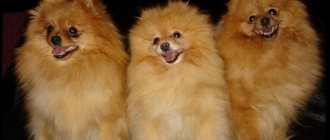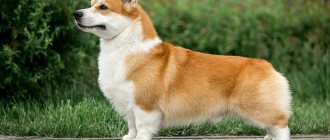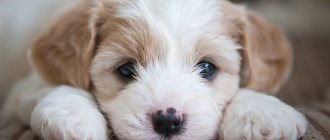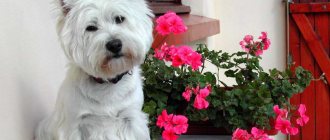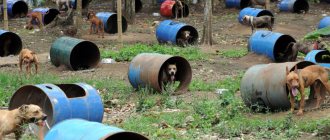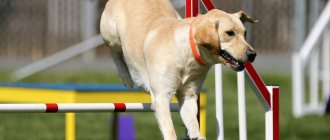These spectacular and colorful competitions have their origins in North America, where a dog team was one of the accessible and practical ways to travel.
Now there are more than 5,000 professional athletes and a huge number of amateurs who prefer this sport. Let's talk about what a beginner needs to know and what to pay attention to when studying this topic.
History of sled sport
Sled dog racing was first mentioned in 1850 - travelers competed on the road between the cities of St. Paul (USA) and Winnipeg (Canada). Another recorded evidence of such competitions dates back to 1886, when they were held as part of the Winter Carnival in the same St. Paul.
However, the real origin of sled sport occurred during the “gold rush” in the Canadian Yukon and American Alaska. Thousands of seekers flooded the region in search of the precious metal, and in the snowy expanses, dog sleds became the most efficient means of transportation over long distances. A class of professional drivers (mushers) was formed, delivering supplies to remote mines. Competition between seekers also contributed to the growth of the competitive spirit.
The center of the development of sled dog racing was the American city of Nome in Alaska. It was here in 1907 that the first full-fledged sledding competitions called All Alaska Sweepstakes took place. Scottish-born musher Alexander Allan, also known as Scotty Allan, played a major role in organizing the competition. Another famous driver in Nome would be Leonard Seppala, later a silver medalist in the 3rd Winter Olympics in Lake Placid in 1932.
The popularization of sled sport was greatly facilitated by the story of Balto , the leader of the team that delivered anti-diphtheria serum to epidemic-stricken Nome in 1925. The story of a husky dog that helped musher Gunnar Kaasen find his way in a snowstorm received enormous resonance in the media. The team made several tours throughout the United States, and Balto himself became a national hero - a monument was erected to him in New York. In memory of this Race of Mercy, competitions began to be held regularly in Nome, attracting many fans of both sledding sports in general and the story of the heroic dog in particular.
Although dog sledding was originally popular in North America, over time it began to gain fans in other countries. The first European state to have its own professional competitions was Norway. This was facilitated by the history of local explorers of the Far North, Rasmussen and Nansen, who used dog sleds in their travels. At the 1952 Olympic Games in Oslo, sledding was presented in the form of demonstration competitions. Gradually, their own competitions began to be held in Austria, France, Switzerland and other European countries . Already in the 70s of the 20th century, sled dog racing clubs were registered almost throughout Europe.
An important stage was the creation in 1983 of the European Sled Racing Association (ESDRA), under the auspices of which today the European Championship and Cup are held among 22 countries. In 1992, national sled sport federations from all 5 continents united to form the International Federation (IFSS), which holds the Cup and the World Championships, as well as representing sled racing in the Olympic Committee.
In the USSR, dog sled racing was poorly represented - competitions were held as part of national northern holidays, and the media covered such events only at the regional level. The situation changed in 1990, when the first sports race “Beringia” was held in Kamchatka, 250 km long. A year later, it competed with the 1,920-kilometer Chukotka Nadezhda highway, which connected the Russian Anadyr and the American Nome, thus becoming the first international competition in Russia.
In the mid-90s, sledding was carried out in Central Russia on the Moskovia track, which connected Moscow and St. Petersburg. And in 1996, domestic athletes organized the first Russian Sled Dog Racing Federation, which joined ESDRA and IFSS. Its successor in 2003 was the All-Russian Association of Equestrian Sports (BAEC), which existed until 2011. For 3 years after this, the development of sled sport in Russia was carried out thanks to the efforts of regional associations and clubs, many of which were represented at the international level. In 2014, 23 of them united under the leadership of the Russian Sled Sports Federation (FES). Domestic mushers actively participate in international competitions, including taking prizes at European and world championships.
How are dogs trained to walk and run in sleds?
The learning process is built on hard work. With the right approach, even a mongrel can be raised into a good sled athlete. The main rule is regular training.
Trained dogs can easily cover distances of up to 150 km/day. To achieve such results, dogs need to run in a harness with a rider every day for 10-15 km.
Before you start training, you need to pack a bag with the necessary things (vet kit, leash, dog food, drinking water, food for the driver, and other necessary things for the hike). If we talk about training methods, then it is different for different breeds. But they begin to ride in sleds, as a rule, through the forest, so that the dogs immediately form the correct idea, and they can freely maneuver among the trees to the right, forward and left.
Dogs are introduced to canicross from an early age, usually at 4 months. To do this, put a short harness-leash on the puppy with a toy attached. This method allows the young dog not only to learn, but also to have fun. Initially, classes of this type are carried out in the house, and after a couple of weeks the baby is taken outside. Mature individuals are trained using a method of copying the behavior of already trained animals.
The training process algorithm is divided into several points:
- formation of the situation (the dog on the track makes the right and quick decision);
- action control (the driver regulates and directs the pets);
- encouragement;
- repetition of riding tasks (for each dog the skill must be brought to automaticity).
Training your pets is half the battle. The driver plays an important role in riding competitions. He must have a clear understanding of how to place his dogs in the harness: low-ranking dogs cannot cross or overtake high-ranking ones. Therefore, the latter are put at the head of the team, and it is they who lead the entire pack to victory.
Sledding sport is interesting, exciting and exciting. If you are ready for extreme conditions, tough competitions and fast riding in a harness, then this hobby will appeal to you. But do not forget that not only dogs, but also the owner himself participates in the competition, so be prepared for hard daily training together. Only through hard work can you achieve high results.
Dog sports have recently become widespread among dog breeders. One of the most exciting areas is sledding, which involves covering a certain distance at speed.
Specifically, sledding is divided into winter and summer disciplines, which, in turn, are also divided into the method of moving behind the dog. This article will highlight the main directions, as well as the essence of disciplines in sledding.
1. Breeds that are more often used in sledding sports.
For sledding sports, northern sled dogs are more often used: Siberian huskies, malamutes, Samoyeds, huskies, etc. They have great endurance and optimal speed capabilities due to their anatomical structure, as well as metabolism. These breeds are also very resistant to cold because they have a good undercoat. This breed category is ideal for winter riding disciplines.
Different breeds of northern sled dogs are often used in sleds. This is done in order to optimally distribute the load from the transport being moved, as well as to give a certain speed and maneuverability to the entire team.
For example, Malamutes are placed closer to the sleds, since due to their size they have great strength, even Samoyeds and, at the very beginning, Siberian Huskies, who have the best speed indicators among northern sled dogs..
Hunting dogs are often used for sledding, such as shorthaired pointers, drathaars, etc. They are quite fast and at the same time quite durable. However, the structure of their coat does not allow them to withstand severe frosts, so they are more often used for summer riding disciplines.
Also used are breeds such as Doberman pinschers and pointers, which are characterized by high speed, but rather low endurance, and German shepherds, which, on the contrary, are very hardy, but are not nearly as fast.
2. Winter disciplines.
Among winter sledding disciplines, a distinction is made between skijoring and backgammon, pulled by teams of different numbers of dogs.
Skijoring involves towing a skier with one dog. Moreover, this discipline is divided by age and gender of athletes, distance, and dog breeds.
Sleds, in turn, are usually divided only by the age of the athletes, the number and breeds of dogs. In this discipline, dogs pull a special sled - backgammon, which differs from ordinary sleds in design and configuration.
3.Summer disciplines.
A summer alternative to skijoring is canicross. At the same time, the dog pulls the athlete running behind it. Otherwise, the division is carried out in the same way as in skijoring.
There are many more summer alternatives to backgammon:
•Bikejoring, in which a dog pulls a bicycle with an athlete;
•Scooter, in which the dog pulls a two-wheeled device, similar to a scooter, but with larger wheels;
•Karting, in which dogs (2 or more) pull a four-wheeled device.
At the same time, bikejoring is subject to the same division as canicross, and scooter and kart are already divided according to the instructions of the chief judge.
Sledding sport is an area that does not require great abilities from the animal and the athlete. Unlike other service disciplines, it can be practiced by a very young amateur.
Moreover, this sport is quite developed not only in our country, but also in other countries of the world. Competitions of various levels (from regional to international) are regularly held. You can participate with any breed of dog.
Dogs have accompanied humans for many centuries. They have become indispensable assistants in hunting and grazing, excellent guards and companions. But we should not forget about such an area as sled racing.
These spectacular and colorful competitions have their origins in North America, where a dog team was one of the accessible and practical ways to travel.
Now there are more than 5,000 professional athletes and a huge number of amateurs who prefer this sport. Let's talk about what a beginner needs to know and what to pay attention to when studying this topic.
What is sled sport?
Sledding sport is a competition between dog sled drivers for speed and distance using the pulling power of dogs and special equipment. If initially such races used harnessed sleds and skis, today the variety of equipment is much higher and also includes scooters, karts, and bicycles for organizing competitions in the snowless season or in countries where snow is rare.
Nowadays, sledding sports are distinguished by a wide variety of types. Thanks to this, a wide range of people of almost any age with varying physical fitness can engage in dog sled racing. This is team work, everything depends on the coordination of the work of the musher and the dogs, their ability to understand each other.
The highest status and honor among athletes is considered to be participation in a long-distance race. Its length can reach 2000 km, and this is a real test for both humans and dogs. There can be from 12 to 16 dogs in a team for such a distance; the race itself takes several days. To attract more public attention to sledding, the organizers include additional elements in the event program. For example, they organize a “grazing” start, which consists of dogs running several laps around the stadium. The routes and competition conditions are also becoming more complex - in particular, many of them are held on mountain roads.
Where to start training
Riding requires special training. This is a complex discipline, classes must be conducted by a coach on a specially equipped site, in a team. One of the important conditions is the dog’s absolute obedience, so you will first have to go through a general training course.
Dogs begin training for racing at the age of 4-6 months. Sled (working) breeds require less time to acquire and master the necessary skills and by 1 year they are fully ready for competitions. Dogs of other breeds may take a little longer.
It’s good if the decision to take up sledding comes at the stage of choosing a puppy - this way you can choose a dog based on the performance characteristics of the parents, strong and hardy representatives of the breed. Decorative exhibition representatives will not always be able to meet your expectations in sports.
Types of sled sports
The popularity of sledding has led to the fact that it is practiced in almost every country. However, not everywhere there are the same conditions as in the home of sled dog racing. For this reason, various disciplines were invented, and special equipment was developed to adapt such competitions to warm climates. At the moment, there are the following types of sled dog sports, which can be combined into two large categories:
Snowless disciplines (dryland). Such competitions are held in the warm season or in countries where snow is rare. Snowless disciplines include:
- canicross - running of a person with a dog fastened to his belt with a special pull rod with a shock absorber;
- dog tracking – differs from canicross in that movement at different paces is allowed, from walking to running;
- bikejoring - a race on a bicycle with one or two dogs fastened to its handlebars or a special bracket using a pull;
- scootering - a race on a special scooter (scooter), to which a team with one or two dogs is attached;
- karting – racing on a 3- or 4-wheeled cart harnessed to a team of 4-10 dogs;
Winter disciplines. These types of sledding sports historically appeared and developed earlier and are carried out during the cold season and in regions with a lot of snow. Among the winter disciplines the following stand out:
- skijoring - a race of a skier with 1-2 dogs attached to his belt with a pull rod with a shock absorber;
- Pulking is a competition using small sleds to which a team of 1-4 dogs is attached using a cable;
- Sled racing is historically the first discipline of sled sport, a competition between mushers on sleighs (sledges) connected to a team of 2-16 dogs.
In addition, at competitions in any season there is also a relay race - a sequential race of several participants. Representatives of several disciplines can participate in it.
Sledding competitions are also divided according to length into the following types:
- sprint – the maximum distance of such a race is 40 km;
- middle distance races – their length is 40-500 km;
- Long-distance races are marathons of 500 km or more.
It should be noted that the last two types of races are held only in winter on snowy surfaces.
- OO training
20 interesting games with your dog on a walk and at home
- 09.11.2015
Ethnocultural complex "Husky Land" (MO)
Address : Leninsky district, Molokovskoe village, village. Island Website : https://huskyland.ru/ Phone , +7 (969) 010-74-07 Cost : 1,000 rub.
Mischievous reindeer Bunny and Cupid and world favorites - huskies, which you can ride on a sled. Animals will be introduced to the mythologization, psychology and way of life and given the opportunity to communicate with them.
The programs will bring you closer to culture and tell you about the uniqueness of the territorial Russian north.
Sled dog equipment
Equipment for sled dog sports plays an important role in racing - success in competitions largely depends on how carefully it is selected. The ammunition is designed in such a way as to optimally distribute the load on the animals and reduce the loss of their draft effort. The following equipment is used in modern sledding:
- harness – use special synthetic harnesses, which are designed to distribute the main load on the animal’s chest and, partially, on the rest of the body;
- collar – usually nylon half-choke collars are used, with the help of which dogs are fastened in one row;
- carabiner is a convenient snap lock with which the harness is fastened to pull rods connected to a sled, pulley, scooter or other load;
- a pull is a flexible and lightweight cable made of nylon fiber or other durable and elastic material that connects the dog to the load, and also transmits the draft force of the team;
- a shock absorber is an element installed at the beginning of the main pull, which reduces shock loads on the dog’s body, allowing it to make jerks and jumps without health consequences;
- a harness is an auxiliary pull for hooking a team to a tree or pole while stopping or before starting, often supplemented with a double carabiner or other device for quick release.
Sled sport equipment is made individually for each dog. Previously, the material for it was genuine leather, but today in professional sports synthetic materials (nylon, polypropylene, etc.) are more common, which are lightweight, durable, elastic, comfortable for dogs, and are also easy to clean.
How the competition works
Today sledding sport is represented by a huge number of international and national competitions. Although there are generally accepted rules for their conduct established by the relevant associations, each competition has its own specifics. The following most significant sled dog races are held in Russia:
- "Following the trail of yellow leaves." Dryland under this name takes place in October in the Moscow region at the recreation area in the Volkusha quarry. Today this is the most popular race in Russia, which is very popular among beginners, as it provides an opportunity for socialization and training of pets, as well as learning from the experience of many professional racers. Athletes of both sexes over 12 years of age and dogs of any breed over 12 months can take part in these competitions. The competition program includes canicross, bayjoring, scootering and karting.
- "Silver Boat". This race takes place in December near the village of Nikolskoye in the Kostroma region. One of the goals of this competition is to attract young people to sledding, so the program includes competitions between children under 9 years old, juniors (10-14 years old), middle-aged boys and girls (14-18 years old) and men and women of general age (from 18 years). Dogs of any breed, including mongrel ones, are allowed to participate in the races. The “Silver Boat” competitions are held in such disciplines as harness and skyjoring at distances of 20 km, 5 km and 500 m.
- "Through the land of Sampo." These are international competitions of a higher professional level, held in the Republic of Karelia in January. Athletes over 18 years of age with dogs of any breed are eligible to participate in the race. The competition program includes disciplines such as harness and skyjoring at distances of 40, 10 and 6 km.
- "Northern Hope". In the same Kostroma region, in the Neysky district, a race with a total length of 300 km takes place, which is the main one for athletes specializing in middle distances. The competition program includes sled racing, skyjoring and pulking. Athletes aged 18 years and older with vaccinated dogs of any breed and over 18 months of age are allowed to compete.
- "Hope". One of the two oldest sled dog races in Russia, taking place in Chukotka and having a length of more than 500 km. This international competition brings together professional mushers not only from Russia, but also from the USA, Canada and other countries. Athletes over 18 years of age can participate in the competition with dogs of any breed over 18 months old.
- "Beringia". The very first sled dog race in Russia, held since 1990 in Kamchatka. One of the most prestigious sledding competitions, in which both Russians and citizens of other countries participate. “Beringia” was listed in the Guinness Book of Records as the longest route (1980 km); today its distance is 1500 km. Athletes over 18 years old and dogs over 18 months old are allowed to compete. Due to the long distance and northern terrain, the race only includes sled racing.
In addition to the above races, Russia also hosts other competitions covering all disciplines. Almost every region has its own Federation of sledding sports, which holds competitions at the regional level.
Husky Park "Sokolniki" (VAO)
Address : metro station VDNKh, 5th Luchevoy Prosek, ow. 16A Website : https://husky-sokolniki.ru Phone : +7-495-142-93-56 Cost : 600 rub.
Dogs rejoice at the opportunity to give their friends a breeze through the beautiful forest. It is an additional service to the excursion program “Great Adventure with Huskies”.
The program includes sled riding for children and adults up to 80 kg.
Breeds of dogs for sled sport
The rules of most competitions allow dogs of any breed to participate in sledding competitions. However, it is obvious that not every animal is suitable for such competitions due to the specific requirements that the very nature of racing imposes on its body:
- high endurance, especially at medium and long distances;
- high traction force, allowing you to move loads of various sizes;
- high speed of movement, including on loose soil or snow;
- frost resistance for participation in winter disciplines;
- calm character and non-conflict to ensure coordinated work of the team;
- clear and unquestioning obedience to the musher.
In accordance with the above requirements, the most suitable are considered northern breeds, characterized by dense bones and well-developed muscles - malamutes, Siberian huskies, Greenland dogs , etc. At the same time, to increase speed, many racers began to use animals mixed with the blood of shorthaired pointers, greyhounds , pointers and other gundog or hound varieties.
- OO training
Campbell's personality test
- 11.01.2019
Ethnocultural complex "Drakino Island" (MO)
Address : Serpukhov district, Drakino park, Polet building Website : https://www.drakino.com Phone Cost : from 1,000 rub.
Huskies in Drakino Park.
Siberian Huskies are a specialized breed of dog bred to overcome long distances in difficult conditions. These cute riding beauties are capable of reaching speeds of 40 to 50 km/h. due to the beauty of the Moscow region, they are very fond of small audiences and willingly allow themselves to be caressed and stroked.
In the Drakino park, husky riding has been constantly popular for several years and captivates all guests without exception. A 3-kilometer circular ride will bring you indescribable delight, and there is also the possibility of a photo shoot with a professional photographer. And the most curious are allowed to enter the enclosure, children under 12 years old, only accompanied by adults.
The service is available Friday-Sunday by prior registration.
Circular ride 3 km. Prices:
- Children - 1000 rub.
- Adults - 1500 rub.
How to start sledding
Of course, as in any other canine sport, success in sled dog racing can only be achieved through hard training. Without proper preparation, the results will always be low - moreover, very often athletes who have not paid enough attention to training with the dog simply quit the race.
Training time. Dog sledding training is carried out all year round, except for the summer months - hot temperatures can harm the health of dogs. Although most races are held in the winter, training should begin well in advance to allow your pets to get into shape. The entire preparation period can be divided into several stages:
- active rest (May – August) – during this period, dogs run in nature, hike, swim, etc. to restore strength and maintain muscle tone for subsequent physical training;
- training (August – January) – this stage consists of the dog undergoing a set of exercises designed to develop its skills to a level corresponding to those declared in specific competitions;
- competitions (January - April) - at this stage the dog directly takes part in various races.
Equipment. To train dogs during the snowless season, wheeled analogues of sleds or pulkas are used, for example scooters, karts, etc. The equipment is made in advance and according to the individual parameters of each animal, so that the pets feel as comfortable as possible. Before the competition itself, preparation includes exercises with the equipment that will be used in the races - this way the dogs will get used to it in advance.
Training program. Actually, the training itself implies the development of strength and endurance not only in the dogs, but also in the musher himself, because he will have to overcome many kilometers of snow-covered spaces with them. Training begins with a relatively light load, and gradually increases in intensity and distance. Each musher himself determines the training program and feeding system, focusing on the season, the condition of the dogs, and the nature of the race. Professional mushers have a diary in which they carefully record all the data on weather conditions, distances, possible injuries to dogs and other information that allows them to track the dynamics and effectiveness of the training.
If you are interested in this sport, we recommend contacting your local kennel club. There you can find out exactly where to start learning sled dog racing, what equipment to choose, how to develop an effective feeding system and other information on sled dog racing. Patience, hard work and close cooperation between you and your pets will allow you to achieve high results in this direction.
Husky Park "Northern Wind" (MO)
Address : Yaroslavskoe highway, 45.5 km. from MKAD, Sergiev Posad district, village. Abramtsevo Website : https://huskyhome.ru Phone Cost : 500 rub./lap, 1,800 rub./4 or more laps
On the territory of the North Wind Husky Park you can plunge into the friendly atmosphere of the kindest husky dogs.
You can also chat with the dogs, take pictures with them and ride on a sled with a husky. Age does not matter.


